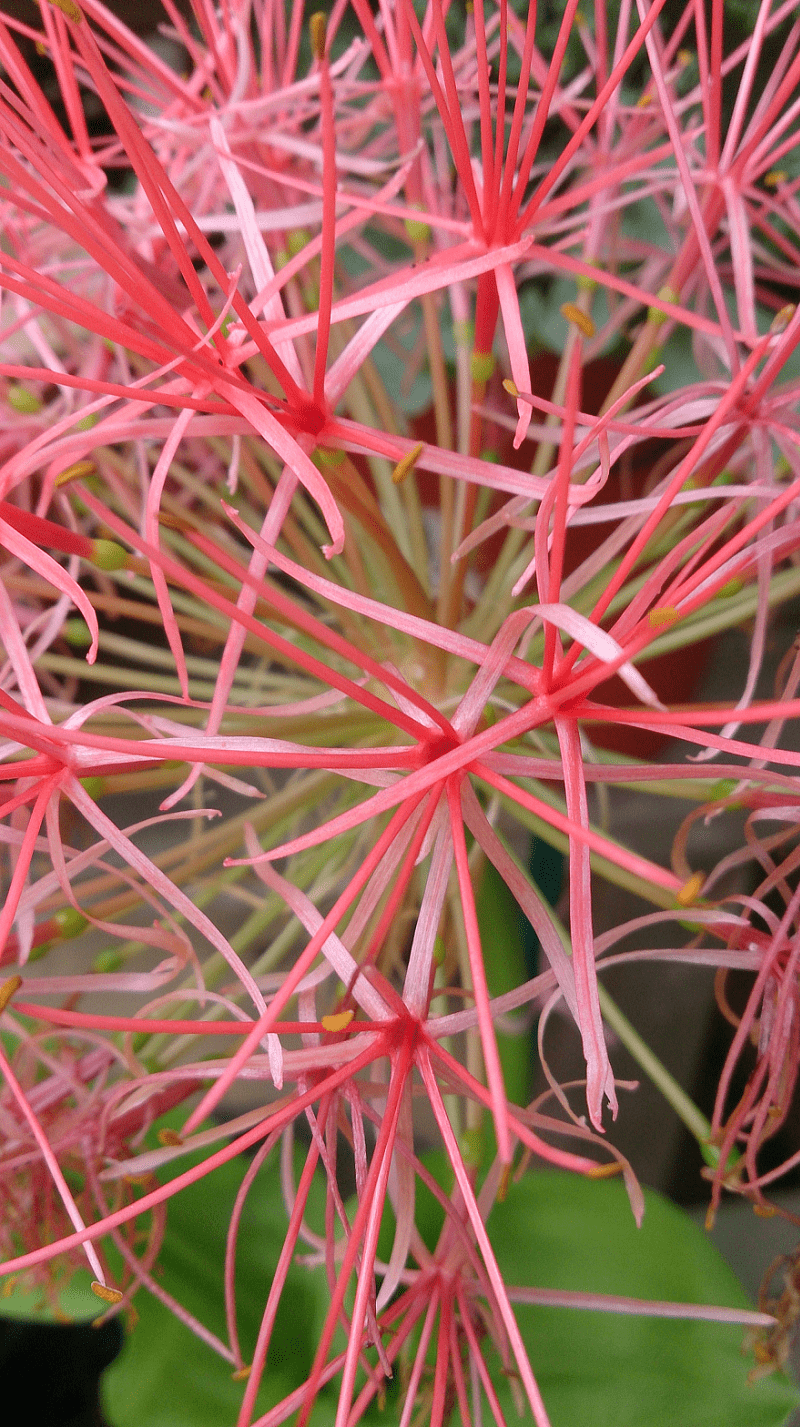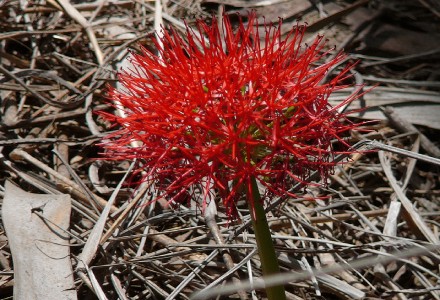
Blood Lily Facts
- The unique and truly remarkable Blood Lily represents a highly fascinating plant that has a background that may surprise many of you. The distinctive term, however, represents only one its common names. In point of fact, it has several alternate names.
- Among others, these include the fireball lily, the Katherine-wheel, the oxtongue lily, the poison root, and the powderpuff lily. Professional researchers, though, typically refer to it by its somewhat cumbersome technical name of the Scadoxus multiflorus.
- That tongue-twisting term was given to it by the French researcher, Constantine Samuel Rafinesque. This term he applied to the plant in the year 1838. That action, though, represented a renaming of the species, moving it to an entirely different genus.
- This marvel of Nature originally bore the name of the Haemanthus multiflorus, however. The English botanist Thomas Martyn made the first recognition of it as a separate and distinct species. This noteworthy even occured in the year 1795.
- Because of its unique appearance, it makes for a beautiful ornamental plant, often used by gardeners for that exact purpose. Indigenous People have also long used the plant in native medicines. In this, it mirrors the traits of many indigenous flora.
- For now, the Blood Lily appears to have a sufficient and stable population across its range. The IUCN therefore has no listing for it on its Red List. Given the nature of its habitat, it could be at risk. Its greatest threat likely consists of ongoing climate change.
Related Articles
Tiger Flower Rosy Periwinkle Harlequin Flower
Photographer: Atamari
CC License: https://bit.ly/1p2b8Ke
Blood Lily Physical Description
The truly stunning Blood Lily merits admiration for more than just its unique appearance. That’s because it evolved a highly fascinating physical characteristic. That occurs due to the fact that the remarkable plant constitutes both a perennial and an evergreen.
As a result of this, specimens grow from either rhizomes or bulbs. This makes the species highly versatile and relatively successful. But, while it impresses for many reasons, sheer physical size isn’t among them. Individuals rarely attain a height in excess of 10 in (25.4 cm).
Yet this incredible work of Nature and evolution has other sights to offer those fortunate enough to encounter it. For one, the leaves of the plant generally grow comparatively large and thin in shape. These further remain green throughout the entire year.
The blooms themselves also garner great attention, and merit it. The flower heads develop uniquely, typically showing a bright red color, thus the common name. Each head also consists of nearly 200 small flowers. Each plant further grows one head only.
However, the gorgeous Blood Lily has one failing. The bloom, unfortunately, has a short lifespan of fewer than two weeks. Many berries additionally develop after the bloom. These most commonly remain small and relatively numerous. The berries begin as green and slowly redden.
- Kingdom: Plantae
- Phylum: Angiosperms
- Class: Monocots
- Order: Asparagales
- Family: Amaryllidaceae
- Genus: Scaxodus
- Species: S. multiflorus
Blood Lily Distribution, Habitat, and Ecology
The fabulous plant known most commonly as the Blood Lily holds yet more surprises for those who learn of it. That’s partly because it evolved as native to a surprising habitat range. In point of fact, it evolved endemically to a region of the globe that might surprise you.
That’s because the fascinating flora evolved as native to moderately arid sections of the globe. More specifically, this beautiful variety of flora appears in both sub-Saharan Africa and the Arabian Peninsula. The actions of man have also now spread it all the way to Mexico.
Even within this territory, however, the fascinating plant has decidedly specific preferences for its choice of habitat. This only serves to augment its uniqueness, though. These preferences consist primarily of regions appearing at either low or medium altitudes.
Inside of those ranges, however, the plant shows a surprising fecundity. Areas in which it develops include regions such as woodlands, secondary forests, montane grasslands, savannas, and even coastal scrub. In this way, the Blood Lily perfectly shows its adaptability.
This Angiosperm actually develops in different ways in the different habitats. Firstly, the plants appearing in temperate regions generally spread via bulbs. The tropical populations, meanwhile, generally spread via rhizomes, and usually appear in well-drained areas.
Species Sharing Its Range
Cheetah Medusas Head African Penguin
Check out our other articles on Earth’s Many Mesmerizing Cephalopods, Greater Sage Grouse, Dallol Hydrothermal Field, Nevin’s Barberry, American Burying Beetle

